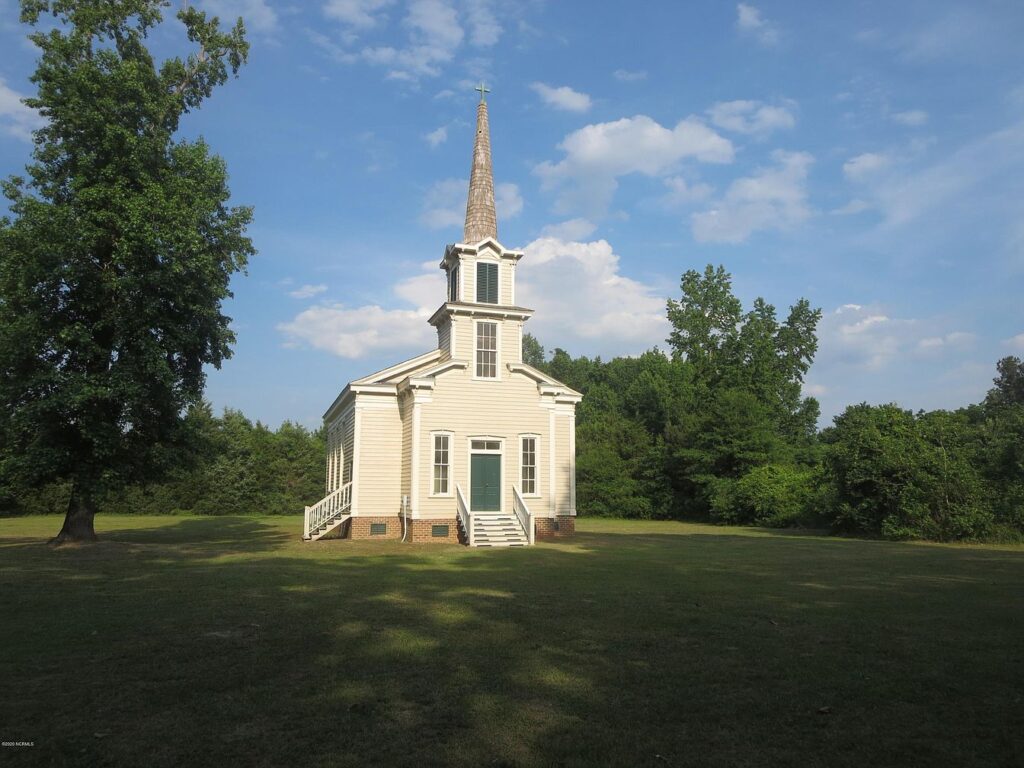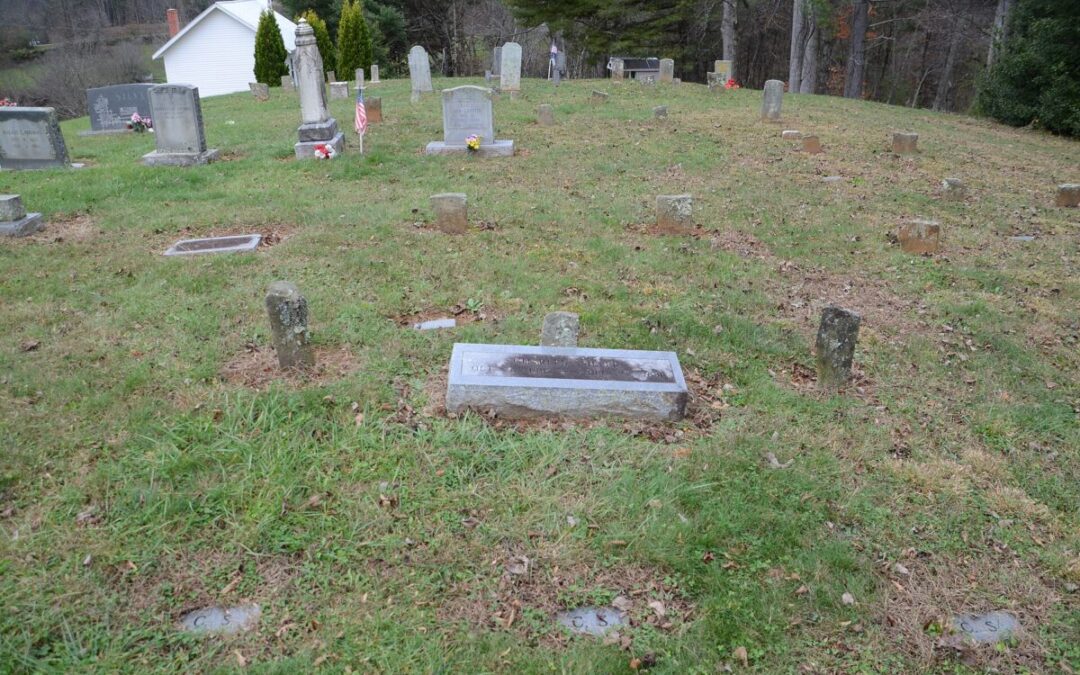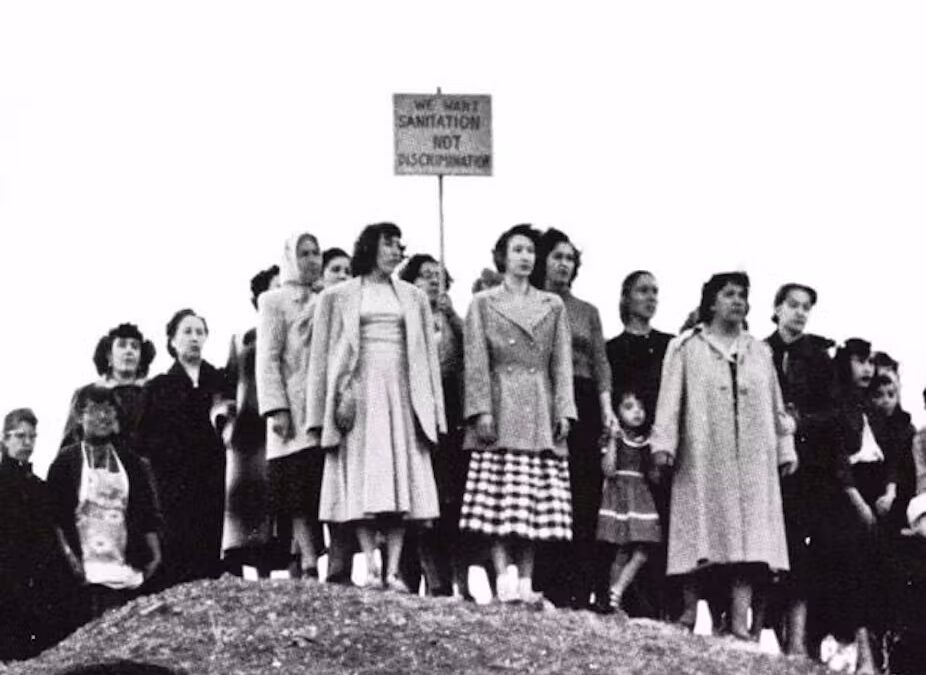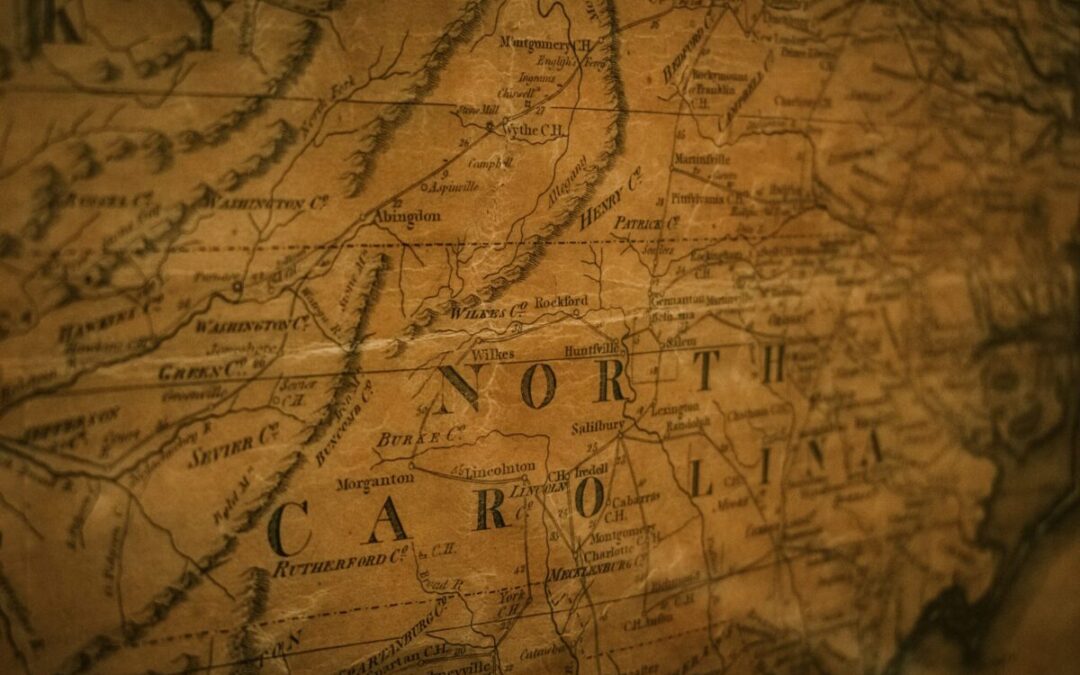
The William Lee House in Bertie County, one of many historic places in this old eastern NC town. (Photo courtesy of Wikipedia Commons)
As this small Bertie County town sees its population fall, a rich history is being left behind. Here’s a closer look at the historic landmarks that tell a rich story in this eastern NC county.
Located in a rural part of northeastern North Carolina where the Chowan River feeds into the Albemarle Sound, Bertie County has fallen on hard times.
While people continue to move into metro areas spread across the state, places like Bertie County have seen their populations fall in recent years. In fact, out of around 20 towns and cities to see such decreases, two are located within Bertie: Aulander and Lewiston Woodville.
Lewiston Woodville has lost more than half of its population over the last three decades, going from 1,200 people in 1990 to just over 700 residents in the most recent US Census.
Read More: Rural NC communities get grant funding to address healthcare, infrastructure issues
These changes can be credited to a number of things — the relocation of a highway and the loss of a peanut processing plant that was critical to the town’s economy chief among them. While the folks still living there are fighting to bring Lewiston Woodville back to stability, its future remains unclear.
What is clear, however, is that the tiny northeastern North Carolina town — the result of a 1981 merger between the then-separate villages of Lewiston and Woodville — is home to a rich history that lives on today in its landmarks.
Added to the National Register of Historic Places in 1998, the Woodville Historic District comprises 36 buildings and three other sites including six pre-American Civil War houses, one antebellum church, an 1870s rectory, two antebellum church cemeteries, and three early-20th-century American Craftsman houses.
Below, we take a look at three examples of landmarks that show off the rich history of the town. Perhaps a deeper look at such history can spark inspiration for a brighter future.
St. Frances Methodist Church

Built in 1845 by Thomas Bragg Sr., this one-story, rectangular-frame church features a Greek Revival-style interior and, on the outside, a projecting narthex and two-story tower topped by an octagonal steeple.
According to a 1980 nomination form submitted to the National Register of Historic Places, the church was named in honor of Mrs. Frances S. Pugh of Woodville, who willed $1,000 for its construction. One trivial part of the church’s history points to a possible pettiness between townspeople in Lewiston and Woodsville that may have existed long before the two villages became one.
“In 1896, after much debate among the members, the church was moved three-quarters of a mile from its Woodville site to Lewiston,” reads the nomination form. “The Lewiston members, who outnumbered the Woodville members, felt the church would be a more effective organization if located in their community.”
It was returned to its original site in 2000 and underwent a full restoration four years later. A Triangle couple bought the church in 2013 with hopes of turning it into a wedding venue, though they took a job offer in California shortly thereafter and put the historic building and surrounding property on the market.
William H. Lee House
The William H. Lee House, once known as the Billy Lee Farm, looks today like something straight out of Little House on The Prairie, though this is no Hollywood set piece. Built about 1820, the two-story, three-bay, hall-and-parlor-plan frame Federal-style I-house was very much lived in by the Lee family for decades in the 19th century.
As mentioned in a 2012 National Register of Historic Places (NRHP) listing,“the William H. Lee House retains a very high level of integrity on both the interior and the exterior that is superior to comparable examples in the county.
“The entire building is clad in remarkably intact beaded weatherboard siding and the windows, doors, cornice and corner boards retain original molding,” the description continues. “The interior meets and exceeds the expectations created by the exterior.”
Located on hundreds of acres of farmland between the Wahtom Swamp and Cashie River, the William H. Lee House was a plantation house, with as many as 28 enslaved people — the highest number recorded on the property, as marked in the 1860 Census — living on and working the property at once.
Though no slave quarters survive on the property, there is potential for archaeological evidence of those and other outbuildings that would have supported the functioning of the household.
“Archaeological remains may well be an important component of the significance of the structure,” notes the NRHP listing. “At this time no investigation has been done to discover these remains, but it is likely that they exist, and this should be considered in any development of the property.”
Grace Episcopal Church
The Grace Episcopal Church, believed to have been constructed between February 1854 and October 1855, was reported in a 1972 article from the Bertie Ledger-Advance to be the first church in Woodville, though perhaps they weren’t counting Methodists in that equation, as St. Frances opened a decade prior.
According to the article, a pipe organ given by Margaret Clark Thompson in 1877 was still being used nearly a century later. Thompson was also said to have donated the stained glass used in the east window, made in memory of her daughter, Martha “Pattie” Clark, who died in 1857 at just 18 years old.
Perhaps of highest historical significance on the Grace Episcopal property is the cemetery that surrounds the church. Records show the first recorded burial as William Gray Pugh, son of Thomas and Frances Pugh — this does not appear to be the same Frances Pugh who funded the construction of St. Frances Methodist, as Pughs were aplenty in the area then — in July 1855, before the church was even consecrated.
Other notable burials include Lewis Thompson (1808-1867), the oldest existing gravestone original to the cemetery, which bears the signature “Gaddess Bros. Bait. Md.” A “beloved slave” of the Thompson family is buried beneath a segmental-arched marble headstone with the inscription “In memory of Mammy … Milly Thompson. Died Mar. 18, 1883,” according to an NHRP listing.
Why Not See For Yourself?
Woodville is home to many more historic buildings, as cataloged in this NHRP registration form from 1998. When studied closely, the document shows how each home, church, or business informs the secondary structures around them — meat houses, swimming pools, rectories, dairy barns, and the like.
The best way to study the history of a place, however, is not to study a document from 1998 but to see it for yourself. It may not be a popular tourist destination for everyone, but those interested in American history will not leave disappointed.
This article first appeared on Good Info News Wire and is republished here under a Creative Commons license.

5 creepy things you never knew about North Carolina
These lesser-known facts and stories about North Carolina will make your hair stand on end. Learning more about the state you live in is never a...

The real ballad of Frankie Silver, one of the first women executed in North Carolina
Frankie Silver is believed to be the first white woman executed in North Carolina. Here’s the real story of what happened to her back in the 1830s....

5 unsung films that dramatize America’s rich labor history
By Peter Dreier, Occidental College The U.S. is in the midst of a new upsurge of union organizing. Is a Hollywood drama about angry Starbucks...

5 unsung films that dramatize America’s rich labor history
By Peter Dreier, Occidental College The U.S. is in the midst of a new upsurge of union organizing. Is a Hollywood drama about angry Starbucks...

The real founding fathers of NC: 4 Indigenous tribes that came first
Several indigenous tribes have always inhabited present-day NC. Let's take a look at four of them. Native American tribes have inhabited present-day...







